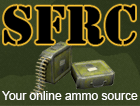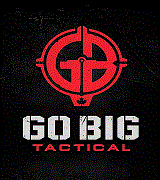Mr Wolverine
CGN Regular
- Location
- Manitoba. Canada
Isandlwana
Some views from the battlefield. I was surprised how undulating the ground was and how large an area the British were spread over before the battle started. Not only were the British up against the finest Light Infantry the world has ever seen, they were simply “out generaled” before the battle started.

Looking towards the mountain from approx where Col Durnfords native horse made their last stand. The British tented camp would have been in the foreground.

A view with my back to the mountain. When the battle took place the ground was covered with lush tall grass, there had been heavy rains and the temp was +40C. The hill to the front left is “Conical Hill" it was near here that Maj Russell, RA with his rocket tubes were over run by the first wave of Zulu warriors. Col Durnford would have been to the right front and Lord Chelmsford was enjoying lunch just over the distant hills.

The view from the cave that the last surviving British soldier would have seen. He chose to take shots at the Zulu warriors looting his dead comrades, rather than hide and play dead. Eventually the Zulus returned fire with captured rifles until he was killed. His name is unknown, only four of the dead were later positively identified. The white washed rocks mark the burial spots for the British dead. To the right of the cave the British transport, huge ox wagons, oxen and horses were parked, in this gully with "Blacks Koppie" to thier further side, every thing was jammed solid, no room to move, this was the start of the trail to Rorkes Drift. The Zulus slaughtered every living creature, even the oxen which they valued.
Some views from the battlefield. I was surprised how undulating the ground was and how large an area the British were spread over before the battle started. Not only were the British up against the finest Light Infantry the world has ever seen, they were simply “out generaled” before the battle started.

Looking towards the mountain from approx where Col Durnfords native horse made their last stand. The British tented camp would have been in the foreground.

A view with my back to the mountain. When the battle took place the ground was covered with lush tall grass, there had been heavy rains and the temp was +40C. The hill to the front left is “Conical Hill" it was near here that Maj Russell, RA with his rocket tubes were over run by the first wave of Zulu warriors. Col Durnford would have been to the right front and Lord Chelmsford was enjoying lunch just over the distant hills.

The view from the cave that the last surviving British soldier would have seen. He chose to take shots at the Zulu warriors looting his dead comrades, rather than hide and play dead. Eventually the Zulus returned fire with captured rifles until he was killed. His name is unknown, only four of the dead were later positively identified. The white washed rocks mark the burial spots for the British dead. To the right of the cave the British transport, huge ox wagons, oxen and horses were parked, in this gully with "Blacks Koppie" to thier further side, every thing was jammed solid, no room to move, this was the start of the trail to Rorkes Drift. The Zulus slaughtered every living creature, even the oxen which they valued.
Last edited:
















































































